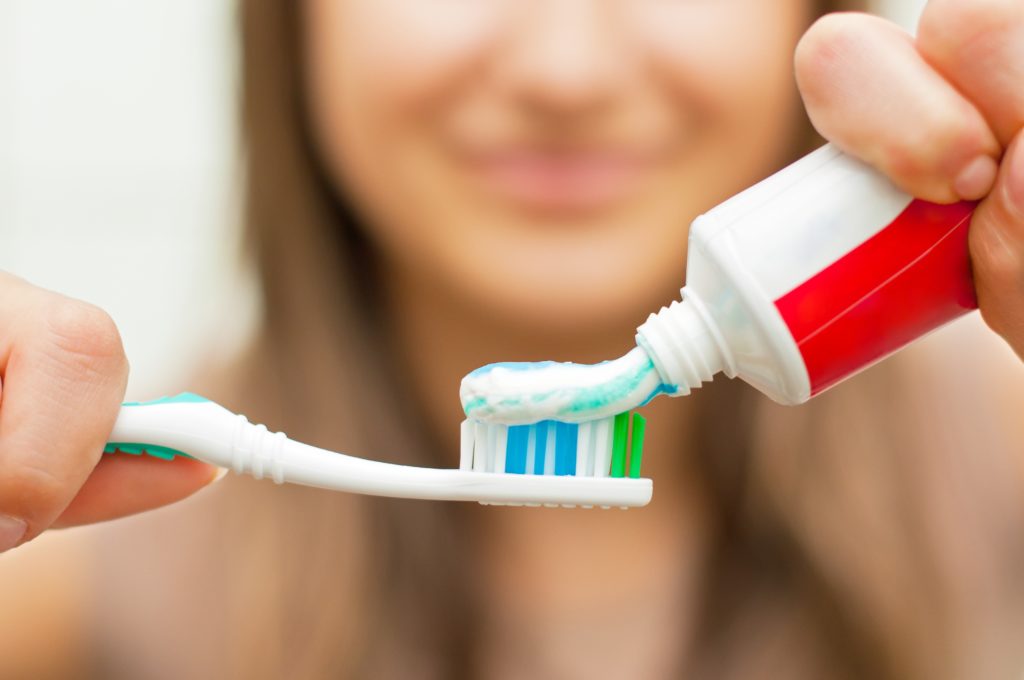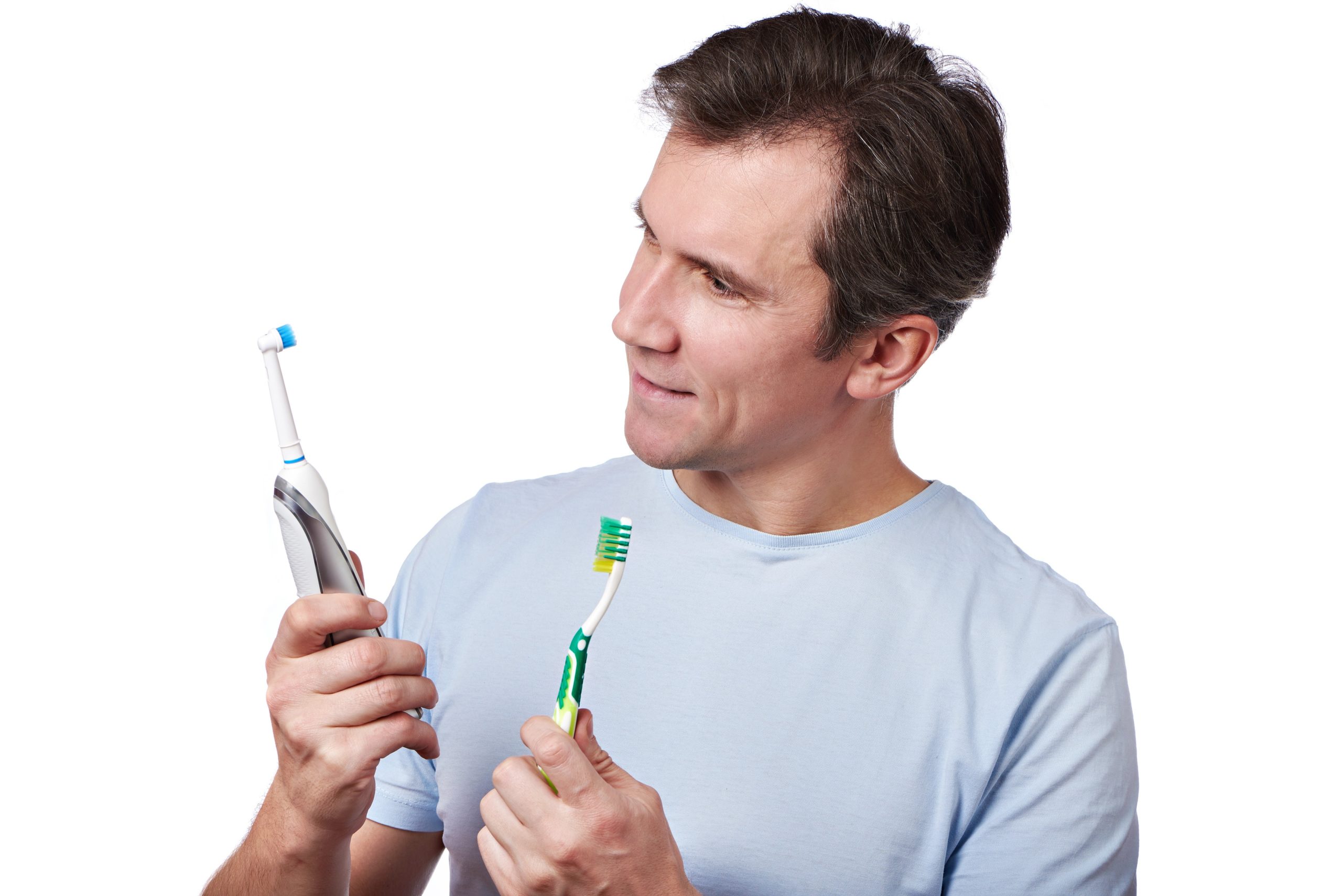When it comes to caring for your smile, most of us know how important it is to have an effective oral hygiene routine, complete with brushing and flossing daily. This is especially true when you are undergoing orthodontic treatment with braces. We always recommend that you brush at least twice a day with fluoride toothpaste for at least two minutes, especially first thing in the morning and just before you go to bed. This is also the ideal time to floss. It is easy enough to maintain these healthy habits, but choosing the best oral care products for braces can be a little more complicated!
Take a walk down the oral care aisle of any store, and the sheer amount of choices on display can be overwhelming. There is toothpaste for sensitive teeth, whitening toothpaste, alcohol or alcohol-free mouthwash, manual or electric toothbrush…it is no wonder we often grab the first item we see and hightail it out of there. That is not necessarily a bad thing since many of these products are equally effective, but when it comes to toothbrushes, it turns out that the electric versions might have a slight edge over manual for patients undergoing orthodontic treatment.
You probably already know that it can sometimes be a challenge for orthodontic patients in braces to maintain good oral hygiene. Food debris gets trapped more easily around the brackets and under the archwires, leading to the potential development of more bacteria and plaque. In a study that compared electric toothbrushes with manual toothbrushes, the American Journal of Orthodontics & Dentofacial Orthopedics found that there was significantly greater plaque removal with an electric brush over a manual one.
Here at Dillehay Orthodontics, we are invested in helping every patient we see achieve optimal results with their orthodontic treatment, resulting in a beautiful healthy smile that lasts a lifetime. Although many of our patients are able to clean their teeth perfectly well with a manual toothbrush, some really do find it beneficial to use an electric toothbrush. If you are currently in braces and use a regular toothbrush in your daily dental hygiene routine, keep reading below to find out how an electric toothbrush could actually be the better choice for you!
Brush up on the basics of brushing
Before we talk about the differences between electric and manual brushes, we are going to take this opportunity to refresh you on the basics of brushing your teeth while wearing braces. To get the very best results from your dental hygiene routine, you should be:
- using fluoride toothpaste
- Using a toothbrush with soft, rounded bristles
- brushing at least three times per day
- brushing gently at a 45-degree angle toward the gum line, and around the top and bottom of the braces
- moving the toothbrush in a small circular motion across all teeth surfaces in order to effectively remove bacteria and trapped food particles
- replacing your toothbrush or brush head every 3-4 months, or sooner if it shows signs of wear
- replacing your toothbrush after any cold or other illness
- aim for clean and shiny braces, with the edge of the brackets clearly visible, since metal that looks fuzzy or dull can be an indicator of poor brushing habits
- flossing at least once per day to remove bacteria and any food that has accumulated
- using tools like floss threaders and waterpiks if you find it difficult to get into the tighter spaces
- using antimicrobial and fluoride mouthwashes
Whether you use a manual toothbrush or an electric one, daily brushing and flossing is the best way to help prevent tooth decay, gum disease, and bad breath. Brushing your teeth with an electric toothbrush is very similar to brushing with a plain one, but there are a few ways using an electric toothbrush can help you get a little extra out of your oral hygiene routine!
What advantages do electric toothbrushes have if you are wearing braces?
Several studies have shown that electric toothbrushes are able to remove significantly more plaque and do a better overall job of cleaning than manual brushes. Some of the best models on the market may even remove up to 2x more total plaque. So what is it about these brushes that give them an edge over manual toothbrushes?
Deeper cleaning
Because electric toothbrushes are designed to drive fluids in between the teeth, they are extremely efficient. You have likely already experienced how difficult it can be to fully reach the various nooks and crannies caused by brackets and wires, but these brushes are often able to get to all of them. For maximum efficiency, most models produce thousands of movements per minute. No matter how fast you brush, this is simply impossible to achieve with any manual toothbrush!
Custom cleaning modes
Many electric toothbrushes have customized cleaning modes that are designed specifically with a certain purpose in mind. There are sensitive modes for sensitive teeth, whitening and polishing modes for stain removal, tongue cleaning modes, and more.
Less room for user error
Cleaning your teeth is hardly rocket science, we know, but you would be surprised by how many people do not brush correctly. This is obviously an important part of oral care since many cavities and a great deal of gum damage can often be avoided just by cleaning our mouths as recommended. Electric toothbrushes come with timers, sensors, and multiple modes that can take a lot of the guesswork out of brushing.

Built-in timers
We are probably all guilty of making a quick job of brushing from time to time. Sometimes we think we have brushed long enough only to find it is been twenty or thirty seconds at most! The majority of electric toothbrushes have a built-in timer that lets you know when the recommended two minutes are up, so you can be sure and spend enough time cleaning your teeth and taking care of your smile.
Choosing the best electric toothbrush for you
Like manual toothbrushes, electric toothbrushes come in a wide variety of styles that offer many different features. Both have their own advantages and disadvantages that are worth considering before choosing the best one for you.
Battery-powered toothbrushes
These electric brushes will normally run using an AA or AAA battery, and work similarly to a manual toothbrush as far as technique is concerned. The difference lies in the design of the brush head. The bristles are made to spin or pulsate, putting a little extra punch in your brushing. These models will typically still require a brushing motion, since the power is only meant to enhance its cleaning ability, and most have replaceable brush heads that can be changed out when they wear down. With care, the same battery-powered base can be used for quite some time. Battery-powered toothbrushes are the least expensive electric option, but you must be sure to replace the batteries as soon as they run out. Leaving dead batteries in your toothbrush can lead to nasty acid leaks, ruining your toothbrush.
Rechargeable toothbrushes
These brushes are usually designed to recharge in a base that plugs into a wall outlet, so there is no batteries to replace. Rechargeable brushes often offer more high-tech options, such as timers, pressure sensors, and replacement reminders. They may also have a variety of brushing options, like oscillation or vibration. Unlike most battery-powered brushes, the power behind these brushes provides all the motion you need, so you will normally only have to guide the brush across your teeth to get them good and clean. These extra bells and whistles do add a little to the overall cost, so you can expect these types of electric toothbrushes to run a bit more than battery-powered and manual brushes.
Electric toothbrush features
Electric brushes offer a variety of different features. By weighing these up and deciding what you consider essential to your routine, you will be able to pick the toothbrush that best meets your needs. Some of the more common features found on electric brushes are:
Timers
Timers that let you know how long you have been brushing are useful if you have trouble keeping track of time or brushing as long as you should. Some timers are even sophisticated enough to keep track of how long you are meant to brush each quadrant of your mouth!
Pressure sensors
Some rechargeable brushes include a sensor that will track your pressure and alert you if you are brushing too hard. If you suffer from sensitive teeth or weak enamel, this is an especially helpful feature.
Multiple brush head compatibility
Most electric toothbrushes have detachable brush heads, giving you the chance to replace the brush when the bristles wear out but keep the electric base. Some bases will only fit one type of brush head, while others are compatible with multiple types, giving you more variety to choose from if you have a preference for softer or firmer bristles.
Different brush settings
There are brushes that offer multiple settings for more variety. Some different settings include:
- Rotary, with the head rotating in only one direction
- Counter-rotational, where the head rotates in various directions
- Rotating-oscillating, allowing different lengths of bristles to rotate in opposite directions
- Oscillating-pulsating, which adds a pulsating motion to the oscillatory motion, further enhancing cleaning

Brush your way to a beautiful smile with Dillehay Orthodontics
Whether you decide to go for a fancy new electric toothbrush or stick with your good old-fashioned manual one, always look for the American Dental Association seal of approval. Brushes with this ADA seal have been studied and tested for safety and effectiveness, and are guaranteed to perform as promised. We also recommend replacing any toothbrush or brush head more often when undergoing orthodontic treatment, as braces can be pretty tough on bristles, wearing them out more quickly.
Whatever your preference may be when it comes to what you use to brush your teeth, the Dillehay Orthodontics team is here to help you succeed in achieving a straighter, healthier, and more beautiful smile. Dr. Dillehay and Dr. J.K. are happy to answer any questions or address any concerns you have about your treatment or oral health, and we are all here to provide extra encouragement anytime you need it. Your comfort, satisfaction, and smile are always our priority!
